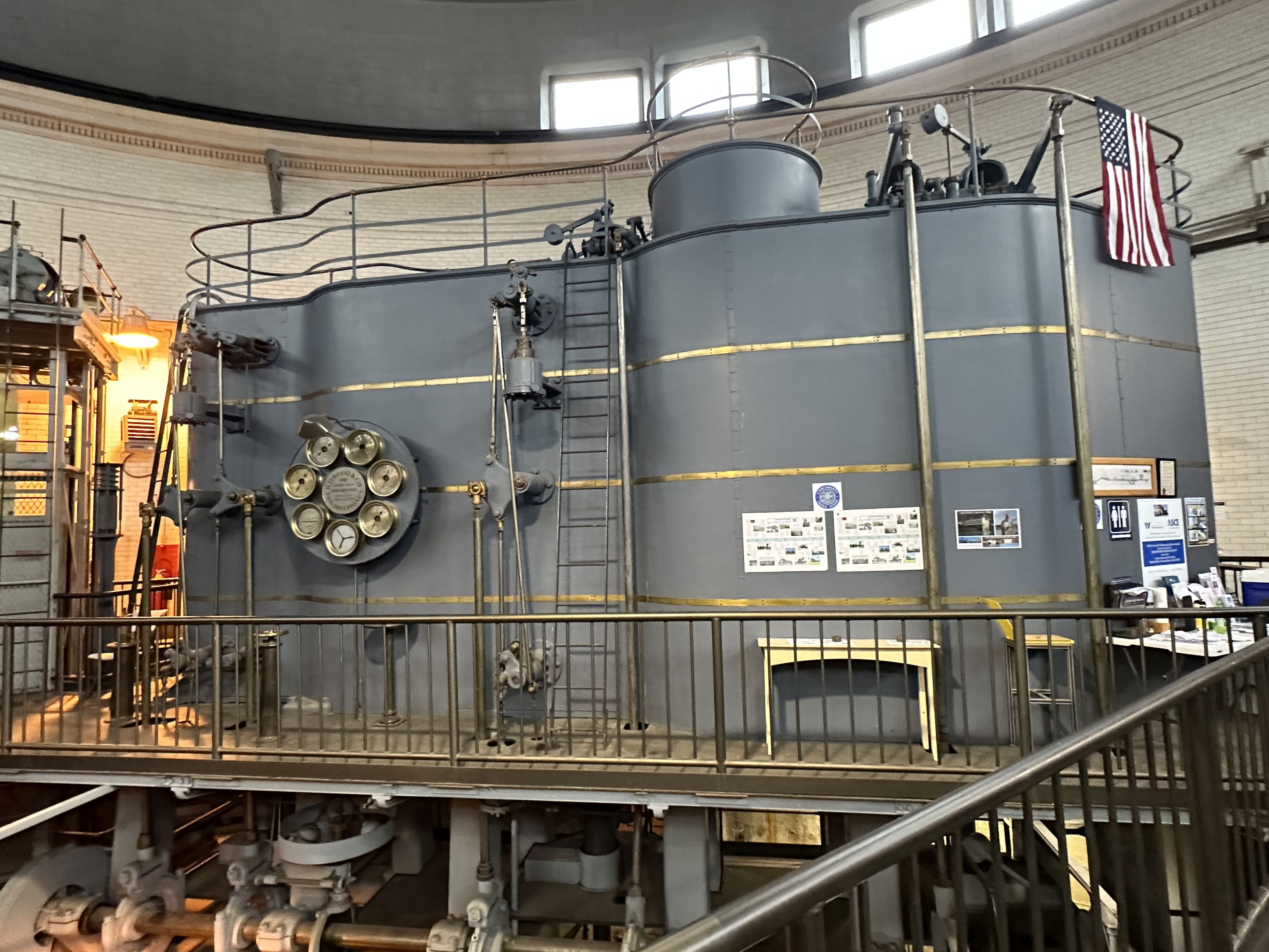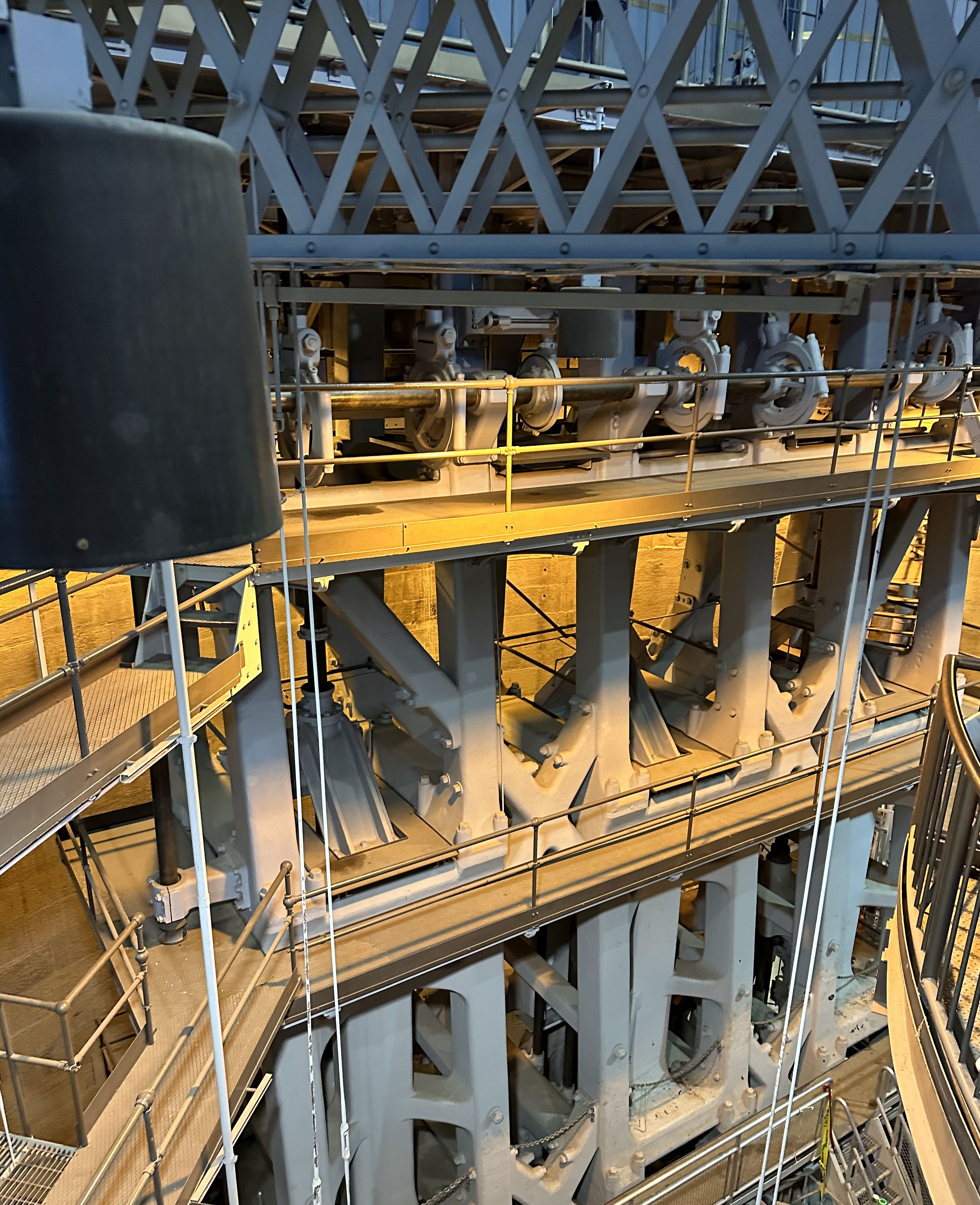So true. I'd think that's about the standard we're used to with passenger cars, safety systems mandatory to be installed, and usage enforced by policing. I hope that the majority of people causing these wrecks are drunk and disoriented, not malicious, and that just giving them a convenient option to get home would eliminate 90%+
Obviously of note is the plumbed services manifold the Homeowner designed. He must have had a stinking absurd lot of money to throw at the house to start with, because I would have started out just trying to eliminate the need for the services. All electric appliances, roof drains off the side into a skirt of pea gravel at the base of the house, and maybe a holding tank for either water or sewer so that one or the other could be detaching from a "static" house position when the house it turned. That would be nowhere as luxurious and easy as this was (presented to be). Hope someone up to the maintenance purchases it and is a good steward
Been using some free time at work to make an inventory of pipeline stream crossings and plan on making it a GIS feature class for regular maintenance. This was inspired by an encased sanitary sewer essentially becoming a low head dam (just eroded, not discharging sewage) in a homeowners back yard and we were unaware until someone called.
It’s mostly just been tracing the features so far, but I’m thinking about where to take it next. Thinking a good direction to go next will be to use the elevation model to try and find manholes in high slope areas and ditches so they can be identified for monitoring for erosion or I&I.
I was introduced to wrong way detection systems early in undergrad when some grad students were grabbing people to be test subjects in their simulator. Strikes me as such a hard problem because it’s trying to control the human factor, and it is pointed out that the majority of the crashes are caused by drunk drivers. Have to figure that this is another problem that increasing automation in cars will help solve along the way.
Felt like this compliments the Practical Engineering video from yesterday by showing that RO has its own difficulties beyond the cost and energy usage. I've heard about these brine disposal issues, especially for the huge coastal cities. Personally, I am of the mind that municipal water demand, ecology, and fisheries all have higher stakes in coastal water quality than the energy industry (green or not).
Second to that, I don't know much about Hydrogen energy, but I had the understanding that electrolysis of water was net negative energy. I'm not sure if that was already counting RO treatment (figure it is cleaner with DI water), but if it wasn't then that makes it even more of an energy loss. I'm often making the argument that transitional energy, from fossil fuels to renewable, is going to be a mishmash of half-working parts and deviation from the efficiency that we enjoy with a mature fossil fuels industry. I don't think that's an excuse to trip over ourselves and do a lot of the same things that oil companies did (destruction of entire ecosystems, getting in the way of the needs of residents, profiting from the results of public capital investment).
Brady does a good job breaking down why RO desalination is energetically and operationally much better than traditional distillation. Only thing I didn't like that much was his discussion of salinity concentrations, as I feel like he built it down by defining what ppt meant relative to percentages, while I think that it being shown to the relative amounts of other dissolved solids like iron and hardness would show that sea water is an order of magnitude more laden with the dissolved solids. To me that is why RO membranes are absolutely miraculous despite the high energy requirements, because they can produce high quality fresh water from differing source water without there being much difference in each treatment process in the end. Running seawater through RO for desalination, versus well water removing hardness and nitrates would mainly differ on the pretreatment to remove suspended solids and then the proportion of reject water to permeate.
I gotta say that the 3d printed building thing is starting to look noticeably more serious than the mortar blob huts that I remember seeing a decade ago. It will be interesting to see if they find their niche and become widely used and affordable. The main thing is, the sitework will still need to be done by laborers and heavy equipment, so now the building itself is going to include even larger specialized equipment for the printer. Will normal laborers learn how to set up and mind these, or will there be another set of specialist operators created?
My understanding is there is emphasis in moving building construction to having most of the work done in a shop environment, and then the pieces all sent to the site and put together like legos. We're suffering a bit for that right now, with simple precast concrete buildings having lead times of over one year. If this keeps up, it may become a case where the trade off between the higher quality (and aesthetic quality) of a precast building is an even trade-off with a less sturdy printed building. Cases when there is an emergency need, like replacing a controls building after a tornado.
I guess it does ultimately come to that for the strictest protections, and probably local EPAs are more in tune with the local hydrology so far as making regulations. However, it could raise a big question of "why bother?" if one state has stricter wetlands protections but has major tributaries discharging into the jurisdiction of states that do not have nearly as strong protections and thus have degraded water quality.
This is one of those instances where I have a lot of cognitive dissonance between my individual feelings, and the desires for ease and expedience when doing projects that are even within sight of a wetland. In my opinion the existing mitigation techniques are laughable and the permitting process is onerous. At the same time, I'd have liked to see even better wetland mitigation or stricter rules from an ecological standpoint and it being the baby thrown out with the bathwater is a massive understatement.
The main problem with PFAS isn't really getting it out of water, but the amount of investment in power and resources to run the processes to remove it, in addition to the starting investments to construct these treatment processes. This is going to be a huge problem for landfills and industries that produce PFAS by-products in their wastewater stream, since as noted in the article, these types of wastewater can be so contaminated that a 99% reduction is still above the proposed drinking water limits.
Since there are no national wastewater discharge limits for PFAS this is really just gambling on dilution to an acceptable level though the wastewater treatment process and discharge into the environment before it enters a water supply downstream. The other side of that coin it that a significant portion of PFAS is captured in the sludge solids in treatment. In the face of that material being contaminated with PFAS, it is likely soon going to be illegal to apply biosolids as fertilizer and so therefore the only direct disposal that is left is to put them in a landfill. Then eventually the PFAS is likely to find itself in the leachate, as the cycle completes.
I haven't heard of that in particular but there have been changes made in my state recently to allow people to get a couple years of their experience for PS and PE at the same time. Additionally, I believe there are some changes coming to allow people who have done surveying work for a significant amount of time to more easily bridge the gap of coursework to get a PS proper. Can't find a source, so I can't confirm the exact details. They had some numbers to back it up that there were significantly more people testing for their PS and it wasn't just the covid backlog.
The PE & PS thing is doubly important here where the County Engineer is required to have both licenses, so I believe its a good thing to allow some of the time to be able to be earned at the same time. Otherwise it is 4 solid years as an engineer and 4 solid years as a surveyor, both separately.
So far as muddying the waters between the duties of a PE and a PS, I don't think that is a good thing for either profession. It sounds like the type of thing you would do if desperate to fill a skill gap without actually training anyone properly. Along with that it will devalue both engineers and surveyors, by making them less specialized and increasing the pool of labor available to whatever tasks are then shared by both licenses.







Sure are. I’m amazed how weird the picture ended up looking at that point, but I took another gander since I ended up there on my lunch break again. There are a couple of pieces of lumber run horizontally on the steel beam’s flange and the top chord of the truss is on top of those boards. I think it looks so funky because there are short pieces between each chord right at the very end